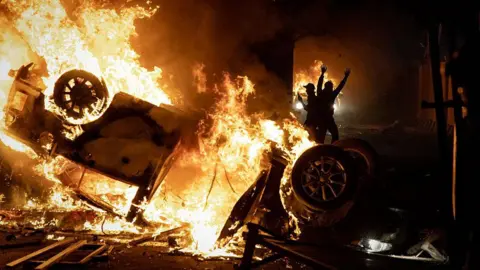Protesters have been killed, buildings torched and politicians' houses looted as anti-government unrest spreads across Indonesia - and the authorities respond with force.
Mass demonstrations, fuelled by cost-of-living woes and public frustration with the political elite, first erupted in Jakarta on 25 August to condemn what many viewed as excessive pay and housing allowances for parliamentarians.
By the end of the week, things had boiled over into violence. On Thursday night, following escalating clashes between demonstrators and authorities, police in Jakarta ran over and killed 21-year-old motorcycle rideshare driver Affan Kurniawan.
President Prabowo Subianto and the chief of police apologised for his death - but it fuelled further discontent that has now spread to various corners of the archipelago, from West Java to the islands of Bali and Lombok.
At least seven people had died in the protests by Monday, according to Indonesia's co-ordinating minister for economic affairs.
The primary trigger for the protests was the Indonesian government's decision to raise the allowance for national parliamentarians.
Local media last month reported that they were paid upwards of 100 million rupiah (£4,499; $6,150) a month - more than 30 times the average national income - including a substantial housing allowance.
Meanwhile, everyday Indonesians were struggling because of a cost-of-living crisis.
These protests spiralled after Affan's death, and have since grown to encompass issues of police brutality and accountability. Other systemic issues driving the public anger include political corruption and social inequality.
In an attempt to quell the protests, President Prabowo announced on Sunday that several state-funded perks given to politicians would be reined in. While this was welcomed, some suggest it doesn't go far enough, as people demand deeper reforms.
Simultaneously, authorities intensified crackdowns on rioters and looters, leading to further unrest where regional legislative council buildings were torched across multiple provinces.
As unrest continues, the government faces a challenge: To manage the protests effectively and address the deep-rooted issues that have prompted such public outrage.


















